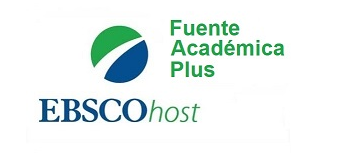HERITAGE MANAGEMENT AND COMMUNICATION: STRATEGIES FOR SUSTAINABLE TOURISM IN THE HISTORIC CENTER OF PASA. ECUADOR
Keywords:
historic center, strategies, pasa, tourist productAbstract
The importance of the Historic Centers was analyzed as evidence of the evolution of the nation, of the transitions of historical periods and the lifestyle of its inhabitants, as well as tourist potential, which would bring economic reactivation and relevance to Pasa, the locality where the development of this research takes place. From an informal qualitative approach, talks, focus groups and field studies were carried out to collect the necessary information and truthfully diagnose the current situation of Pasa in terms of tourism management in its Historic Center. To conclude, a series of strategies capable of contributing favorably to the positioning of Pasa as a tourist product open to Ecuador and the world are proposed.
Downloads
References
Camarero, C. y Garrido, M. (2008). Marketing del Patrimonio Cultural. Pirámide.
Carrión, F. (Ed.). (2000). Desarrollo cultural y gestión en centros históricos. FLACSO.
Conti, A. y Cravero, I. (2010). Patrimonio, Comunidad Local y Turismo: La necesidad de planificación para el desarrollo sostenible. Notas en Turismo y Economía, 1(1), 8–31. http://sedici.unlp.edu.ar/bitstream/handle/10915/15769/Documento_completo.pdf?sequence=1&isAllowed=y
Cuasapaz, R. (2020). Estudio etnográfico sobre la cultura y gastronomía para el turismo rural, en la comunidad Pasa San Antonio, Tungurahua [Trabajo de Titulación, Universidad Regional Autónoma de Los Andes]. Repositorio Institucional UNIANDES. https://dspace.uniandes.edu.ec/handle/123456789/12054
Diaz-Granados, M., Navarrete, J. y Suarez, T. (2005). Páramos: Hidrosistemas Sensibles. Revista de Ingenieria, (22), 64–75. http://dx.doi.org/10.16924%2Friua.v0i22.373
La Hora. (2021, Mayo 28). Pocos jóvenes quedan en Pasa. Periodico La Hora. https://www.lahora.com.ec/tungurahua/tungurahua-pocos-jovenes-quedan-pasa/
López, M. (Ed,). (2012). Guia Turística Artesanal de Tungurahua. Ministerio de Turismo. https://dokumen.tips/documents/guia-artesanal-tungurahua.html?page=4
Pinassi, A. y Ercolani, P. (2012). Turismo Cultural en el Centro Histórico de Bahía Blanca (Argentina): Analisis y Propuestas para su Desarrollo Turístico-Recreativo. Anuario Turismo y Sociedad, 13, 145–169. https://revistas.uexternado.edu.co/index.php/tursoc/article/view/3396
Ramos, M. (2007). El turismo cultural, los museos y su planificación. Trea.
República de Perú. Ministerio de Coordinación de Patrimonio (2007). Plan de Protección y Recuperación del Patrimonio Cultural del Ecuador - PPRPC, Decreto Ejecutivo No. 816 del 21 de diciembre 2007. https://www.culturaypatrimonio.gob.ec/wp-content/uploads/downloads/2015/06/S.O.S.pdf
Samaniego, P. (2007). Financiamiento de centros históricos: el caso del Centro Histórico de Quito. En F. Carrión (Ed.), Financiamiento de los centros históricos de América Latina y El Caribe (pp. 203–244). FLACSO.
Santiago, N., Romero, A. y Álvarez, G. (2017). Actualidad y proyecciones de desarrollo del turismo internacional en Ecuador. Uniandes Episteme Revista De Ciencia, Tecnología e Innovación, 4(3), 276–287. http://45.238.216.13/ojs/index.php/EPISTEME/article/view/721
UNESCO/ICCROM /ICOMOS, Conferencia de Nara sobre la Autenticidad, del 1-6 de Noviembre de 1994. http://www.planmaestro.ohc.cu/recursos/papel/cartas/1994-nara.pdf

Published
How to Cite
Issue
Section
License
Copyright (c) 2022 Javier Jacinto Cardet García, Diego Israel Arellano Paredes, Gabriel Alejandro Viteri Jaramillo

This work is licensed under a Creative Commons Attribution-NonCommercial-NoDerivatives 4.0 International License.
CC Reconocimiento-NoComercial-SinObrasDerivadas 4.0


 English
English
 Español (España)
Español (España)






